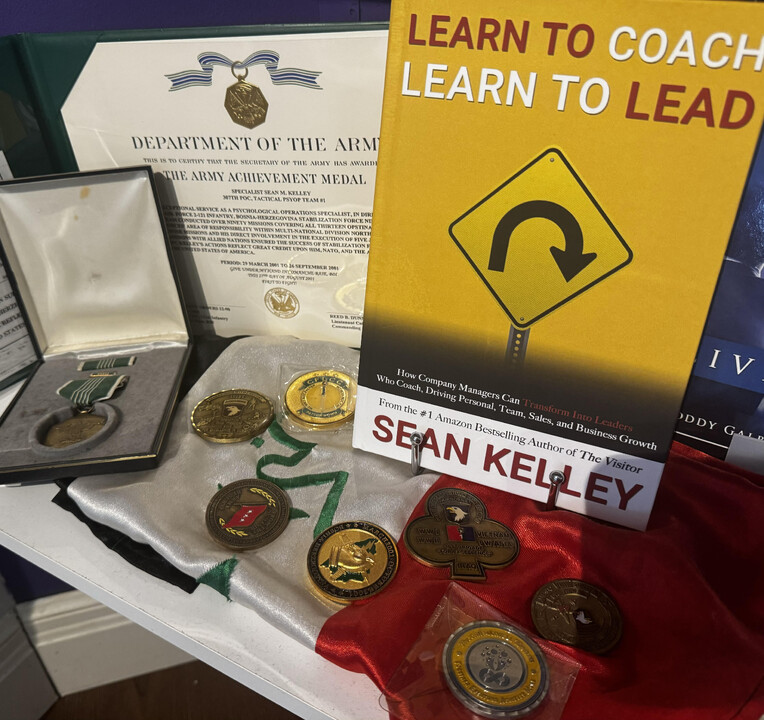Limiting Beliefs that Hinder New Car Sales People
At Car Motivators, we love the opportunity the car business gives to hundreds of thousands of Americans across the country. And while we are more known for taking the top-performing sales professionals and automotive leaders to an even higher level through coaching, we also enjoy helping out new people, often referred to as “Green peas” by industry slang. We all started somewhere, right? Yet with all this opportunity, so few who get into selling cars in the car business make it more than a year in their profession. The greatest things that hold them back, are of course the same things that hold any of us back, what I call limiting beliefs. A limiting belief is a story, con, assumption, or mindset that will prevent success, hinder growth, paralyze, and hamper performance
This blog is to honor our commitment to supporting aspiring automotive professionals across the country and the dealerships that would give those Americans an opportunity. Specifically, this blog is designed to help new to car sales professionals identify and eliminate those limiting beliefs that would hold their success back. This blog will also arm you sales managers with some of the coaching questions that as one of the top sales coaches, I’ve used to help new sales pros break through barriers to sales success.
With no further delay, here are the limiting beliefs:
“If I just had my business cards, I’d start selling cars.”
This one is a big concern! It’s like new salespeople believe every business card handed out is a car purchasing voucher that prospects will bring back to their dealership in exchange for a vehicle purchase.
The reality is: Business cards are dismissal slips. Handing someone a business card is the path of least resistance taken by someone fearful of asking for a prospect’s contact information. And let’s not forget, it’s the year 2023, and there are far more efficient and effective ways to exchange contact information. Instead of business cards, create a contact of yourself in your contacts list and name yourself “(Your Name) (Make You Sell) Car Gal/Guy.” Thus, “Sean Kelley Hyundai Car Guy” would be the name of my contact. When a customer asks for a business card, instead tell them you were tired of customers losing your card and that it would be best for them to have your contact saved in their phone. And if they forget your name, which most will, they can just do a spotlight search for “Car Guy/Gal” and your name will pop up. Here’s the best part, when you send them your contact, now you’ll have their phone number too.
Coaching question(s) to help challenge this limiting belief: Who were the last few people that gave you a business card? Can you pull those cards out right now? Where are those cards right now? How much value then are they for the person who gave you the cards?
Enabling Belief: “I will be courageous enough to always exchange contact information, and schedule follow up with everyone I meet. Because business cards don’t sell cars, and my customers won’t line up to buy them without me building relationships with them.”
Business cards don’t sell cars, but exchanging contact information and following up with prospects does.
“The most important thing I need to learn is the paperwork/software.”
When I hear this one, it takes all my power to hold back the cringe. I’ll take a deep breath and remind myself, “Sean, they don’t know what they don’t know.”
The reality: While paperwork and software are a small part of selling if you don’t know the steps in the sales process, and why you’re leading the customer through each step in that process you won’t have to worry about doing much paperwork. Nothing is more important than learning the steps in the sale process and the WHY behind each one. Here’s a tip for learning paperwork, sell yourself a car. I mean, you don’t have to buy one, simply write yourself up from start to finish as if you were buying a car. As you’re doing so, simply label each piece of paperwork with a #, 1 through whatever in the order of writing it up. In this way, you’ll have a little paperwork guide you can keep on your desk and use when you learn how to sell someone something!
Coaching question(s) to help challenge this limiting belief: Let’s say you could get the paperwork side of things down in a couple of hours, what else would you need to learn for you to succeed in this career?
Enabling Belief: “I understand there is so much more to learn than paperwork, and I will devote an hour each day to learning, starting now and going on forever.”
To maximize success at selling cars months or even years after you’ve learned the paperwork, you’ll still be working to learn the sales process, learn the common objections and their solutions, learn your product knowledge, your competitor’s product, learn the phones (inbound and outbound), learn how to engage and sell to service customers, how to network with local businesses, learn how to market yourself on social media.
“I’m good at talking to people, so I’ll be great at selling cars.”
That’s the equivalent of saying, “I can stack bricks well, so I am a great architect.”
The reality: Having a big comfort zone is an advantage in the car business, but the specific words you use are a key aspect of your ability to sell. There are plenty of very nice, phenomenal conversationalists that struggle to hit their sales objectives each month. Instead, learn the key questions that must be asked to assess a customer’s needs and wants. Learn power phrases to address customer fears and objections. Seek out the people who are top performers selling many customers, generating all the repeat and referral business, and learn what they’re saying, and equally importantly why they’re saying it.
Coaching question(s) to help challenge this limiting belief: What’s the difference between a casual conversation with a stranger and a selling conversation with one?
Enabling Belief: “I will use my words wisely, and master myself to master the language of sales!” There are no free words in sales. Just like martial arts have different degrees of black belt, sales is a language and very few people have the raw talent to start as a black belt in sales.
“I need to hide the fact that I’m new to car sales from my customers.”
It’s reasonable to have this fear because customers do value expertise, product knowledge, and process understanding when looking for the right sales consultant to help serve their needs. That being said, before you go hiding that you’re new to the business, there are even more important factors that need to be accounted for.
The reality: Car buyers also have a fear of car salespeople who aren’t transparent, honest, or downright lie. Ask 100 customers, “Would you rather work with a salesperson who isn’t transparent/open and honest with you or a new car salesperson who doesn’t know everything yet?” What do you think the answer is? If you are new, it won’t take long for customers to figure it out. A great way to build trust is to be vulnerable about your fears. By telling a customer you’re new, you are gaining instant trust. This will allow the customer will reciprocate and be honest about their car buying concerns and want to work with you more!
Coaching question(s) to help challenge this limiting belief: What do you think most car buyers’ perception is of “Car salespeople” in general? How would being honest with them upfront change that perception?
Enabling Belief: Customers want honesty and transparency, as a new sales rep, give them that and they’ll give you trust. Customers want to feel in control while avoiding high-pressure sales reps, so what if you were honest with the customer, AND gave them a choice? After your greeting, use this phraseology, “Mrs. Customer, before we get too far into the sales process, I want to be completely transparent with you. I am new to this career, and you may ask some questions to which I don’t know the answer. That being said, my manager and coworkers are available to help me and I would love to continue working with you if you’re OK with it. Are you comfortable moving forward with me, or would you prefer I get you a seasoned sales veteran to help you today?” The ones that want a seasoned sales veteran, probably wouldn’t have had a great experience with you anyhow! The vast majority that continues to work with you start on a foundation of trust, which will help you sell and close more deals while permitting you to be new and ignorant. What a WIN?! “I will be honest with customers I meet, and give them the choice to work with me and not take it personally or fear failure if they chose not to.”
“Asking for help will annoy people.”
Permit yourself to learn something new, would ya?
The reality: Abraham Maslow concluded that all humans go through four stages of learning, anytime they are growing. Stage 1 is unconscious incompetence: you don’t know what you don’t know. Stage 2 is conscious competence: now you know what you don’t know, or can’t do. Stage 3 is conscious competence, now you get it! Stage 4 is unconscious competence, now it’s muscle memory and you can do it with your eyes closed. Most companies, managers, and coworkers who know that EVERY person must try, fail and learn until they are competent also understand that a new person is going to need help. The key word is “need” because without help you are likely to fail.
Coaching question(s) to help challenge this limiting belief: What could not be asking for help cost you? What could you gain from seeking help from managers and people on your team? If you could ask for help anytime, on any topic, what would you ask for help on right now?
Enabling Belief: “Even though I am a solo contributor, we succeed as a team and my managers and co workers would rather help me than allow me to fail.”
This one is quite simple, ask for help and seek out support and your odds of success go up exponentially. Don’t ask and plan on a much longer and steeper learning curve that could potentially cost you your car sales job.
“I’m just checking out the car business.”
Bad idea. You might as well update your resume and seek out other employment now.
The reality: To maximize your success in the car business, it will take stretching your comfort zone, learning the language of sales, and doing things that only a fully committed human being will do. You must be fully committed to thriving in this business. Tony Robins talks about how the Vikings would invade habited islands. They would take their boats to the island, hop off with their weapons and basic gear, and then proceed to light their boats on fire, completely burning them to ash, before raiding the villages. This is because they didn’t want to leave an option for retreat. My buddy Jonathan Dawson, automotive sales trainer says “If you’re just checking out the car business, you’re going to check out of the car business.” And if you search #GoAllin, you should find automotive recruiter and trainer Anthony Santangelo’s profiles.
I myself decided to turn down a corporate job at Enterprise rent-a-car, and go ALL IN on the car business and since then, I’ve been able to become a dealer groups top salesperson, get promoted through finance, used car management, general sales manager, been offered owner/partnership opportunities and now own the most successful car business coaching practice. And all while growing a wonderful family of five. Not bragging, letting you know it’s ONLY because I went all in on the car business.
Coaching question(s) to help challenge this limiting belief: What could not be asking for help cost you? What could you gain from seeking help from managers and people on your team? If you could ask for help anytime, on any topic, what would you ask for help on right now?
Enabling Belief: “I am going to take advantage of this car business opportunity like it’s the most important thing I’ve ever done because there is no back up plan. I believe if I give it my 150%, I will succeed.”
When you don’t go all in on something, you won’t get all the results you could get. When you don’t get all the results you get, it is often the difference between success/longevity and failure/quitting.
“Product knowledge is useful so I can answer all my customer’s questions and teach them everything about the vehicle of interest.
Yes, product knowledge is important, and being able to answer customers’ questions helps, AND…
The reality: At the same time, customers don’t need to know everything about the vehicle, and over-educating them will cost you sales. On top of that, product knowledge is critical for so much more than answering customer questions. Product knowledge also helps you know which vehicle to sell a customer. Product knowledge helps you identify when the customer has picked out the wrong vehicle for themselves and there’s a better solution. Product knowledge helps you compare your vehicle to your competitors so you can prevent your customers from wasting their time at other dealerships. The last and maybe most important reason for knowing your product is that it’s literally and figuratively how you “build value” for your customers. Product knowledge can be lethal (in a good way) in the hands of the right salesperson and can be extremely detrimental to someone who doesn’t understand how to build value using a tailored walkaround with their product knowledge. Case and point, for a mother of 4 kids who are replacing a vehicle that was just in a car accident, daytime running lights create safety by making her vehicle more visible to other drivers 24 hours a day! But if you’re selling the same vehicle to a young single buyer, the same daytime running lights make their vehicle more visible and look great so they will turn heads. Same features, same benefits but different values for each type of customer.
Coaching question(s) to help challenge this limiting belief: What’s the value of having great product knowledge? How does product knowledge help you build value in yourself? How does a professional salesperson use product knowledge to build value in a walk-around presentation?
Enabling Belief: “I will learn product knowledge because it will first help me tailor my sales presentations to my customers, and second because customers appreciate expertise!”
Use the same features of your product to build value for THREE different types of buyers, then you’ll know you know how to use product knowledge to sell and not bore your customers.
To sum up, every one of us has knowledge gaps and limiting beliefs. Furthermore, when starting a whole new profession, we don’t know what we don’t know, and our brains have tried to fill these knowledge gaps with beliefs. Many of them will be limiting beliefs that could potentially hold our success back. Selling cars is one of the most fun and lucrative professions on the planet.
There are massive opportunities in the automotive industry for both personal and career growth. All that being said, it is critical to identify knowledge gaps, limiting beliefs, and STAY COACHABLE! Because when reality sets in and you realize this isn’t as easy as you had assumed, you will want to quickly eradicate these beliefs and replace them with the right mindsets for success. And you can bet if you’re not getting the results you, or your company needs, Car Motivators team of leadership, management, and sales coaches will be here to support you! You can find us in our closed
Facebook group at facebook.com/coachingthecarbusiness or email me anytime Sean@carmotivators.com










